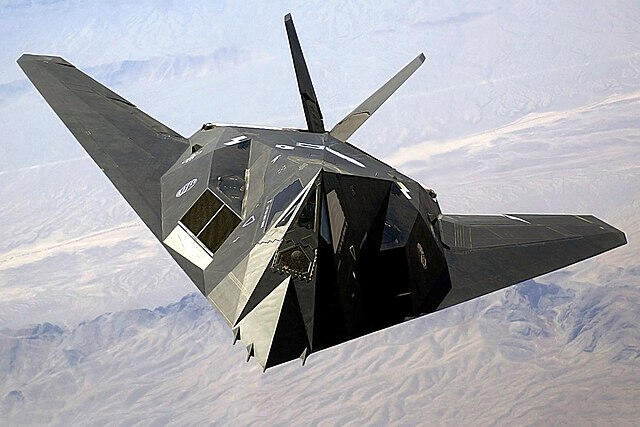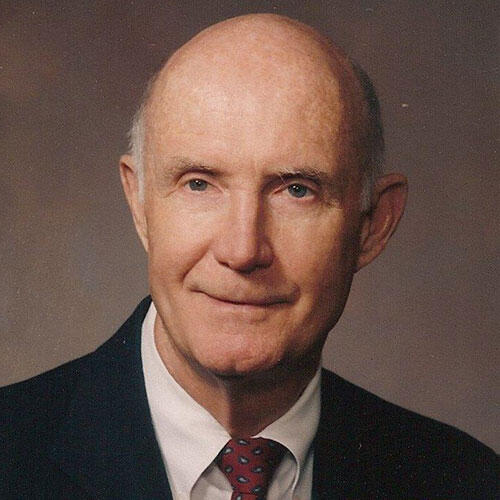
Southwestern Oklahoma State University
"I grew up in western Oklahoma during the Dust Bowl and Depression and I flew to the moon. I'm living proof that nothing is impossible."
-- Thomas P. Stafford
The Stafford Archives are the repository of the papers and memorabilia of U.S. Air Force general and Weatherford-native Thomas P. Stafford (b. Sept. 17, 1930, d. March 18, 2024). General Stafford played a key role in the establishment of the United States as the world's pre-eminent space-faring nation as an astronaut and commander aboard the Gemini 6, Gemini 9, Apollo 10, and Apollo–Soyuz Test Project space missions.
The continuing mission of the Gen. Stafford Archives is to acquire, preserve, exhibit, and provide access to historically significant materials which relate to Oklahomans' contributions to aviation and the exploration of space.
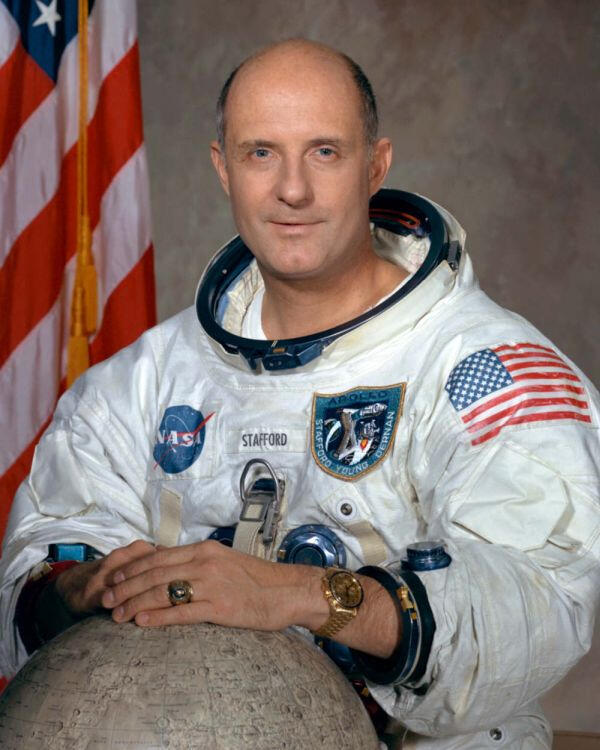
The Stafford Collection
The Gen. Thomas P. Stafford Archives are the repository for the papers and memorabilia which document the national service and achievements of astronaut and Weatherford-native General Thomas P. Stafford. Included in the Stafford Collection are documents, books, awards, photographs, personal correspondence, works of art, and more.Digitized materials from the Stafford Archives can be browsed in the SWOSU Digital Commons.We welcome visitors to the Archives. See this page for visitor information.
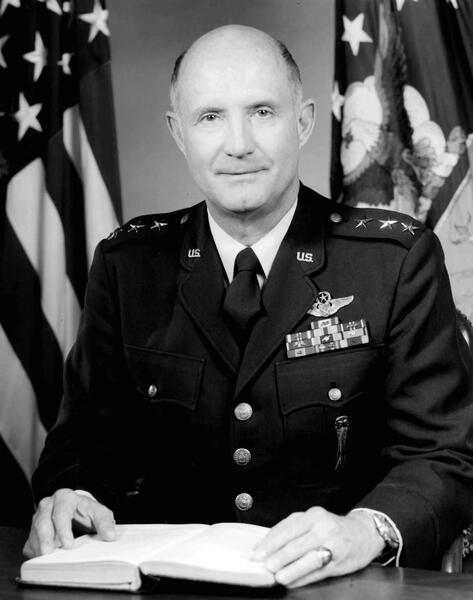
General Thomas P. Stafford
Thomas Patten Stafford was born September 17, 1930 in Weatherford, Oklahoma and graduated in 1948 from Weatherford High School. Stafford graduated with honors in 1952 from the U.S. Naval Academy, Annapolis Maryland with a Bachelor of Science degree and was commissioned a second lieutenant in the United State Air Force. He received his pilot's wings at Connally AFB, Waco, Texas in September 1953. He attended the USAF Experimental Test Pilot School and received the A.B. Honts Award for outstanding graduate. He became an instructor in flight test training, and specialized academic subjects. He is co-author of the Pilot's Handbook for Performance Flight Testing and the Aerodynamics Handbook for Performance Flight Testing. Click to continue reading Gen. Stafford's biography ...
Visit the Archives
The Gen. Thomas P. Stafford Archives are in room 216 of the Al Harris Library. A ceremony dedicating the Archives in Gen. Stafford’s honor and a celebration of the opening of the facility to the public was held on March 11th, 2022.In addition to the Gen. Stafford Collection, the Archives preserve the history of Southwestern Oklahoma State University. Thousands of items, including yearbooks, newspapers, photos, and much more tell the stories of over a century of students, faculty, and staff. The Archives publishes an ever-growing number of these materials online in the SWOSU Digital Commons.The SWOSU Digital Commons is also the online home of the Mythopoeic Society's journal and publications.The Archives’ staff is currently focused on processing and preparing recent acquisitions for digitization and visitor access. For this reason we recommend that you call or email the Archives prior to your visit to ensure that staff will be available to assist you. Fill out the contact form below or send an email to archives@swosu.edu. We can also be reached at (580)774-7024 or (580)774-3030.
Visitor Policies
The Archives’ materials cannot be borrowed and must remain in the reading room.
Food and drink are not permitted in the Archives.
The processing room and vault are closed to visitors unless accompanied by staff.
Please ensure that your hands are clean and dry when handling materials.
Contact Us
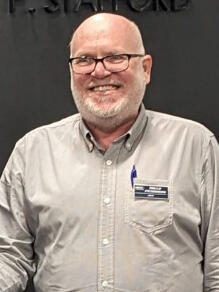
Phillip Fitzsimmons, MLIS
University Archivist & Librarian
Mr. Phillip Fitzsimmons is the University Archivist and Special Collections Librarian at Southwestern Oklahoma State University (SWOSU) in Weatherford, Oklahoma.He is responsible for all physical and digital collections in the General Thomas P. Stafford Archives, and is the administrator of the SWOSU Digital Commons. Since 2015 he has spent significant time in collecting, processing, and partnering with the Stafford Air and Space Museum to make these resources available to the public. Besides the Stafford Collection, he has developed a University History Collection from a series of meetings, partnerships, and collecting historical objects from the Weatherford and Sayre campuses. Phillip has also served as a facilitator for the Mythopoeic Society and other community organizations in western Oklahoma to create digital collections for these organizations and serve as their archivist.Email: phillip.fitzsimmons@swosu.edu
Phone: (580)774-3030
Office: AHL 212
Gemini Project: Gemini VI and IX
Stafford was selected among the second group of astronauts in September 1962 by the National Aeronautics and Space Administration (NASA) to participate in Projects Gemini and Apollo. In December 1965, he piloted Gemini VI and performed the first rendezvous in space. In June 1966, he commanded Gemini IX and performed a demonstration of an early-phase rendezvous that would become standard in later Apollo lunar missions, the first optical rendezvous, and demonstrated a lunar orbit abort rendezvous.
Apollo 10
From August 1966 to October 1968, Stafford headed the mission planning analysis and software development responsibilities for the astronaut group for Project Apollo. He was the lead member of the team that helped formulate the sequence of missions leading to the first lunar landing mission. In May 1969, Stafford would command the Apollo 10 mission to the moon, piloting the first Lunar Module (LM) into lunar orbit. The highly successful mission was the final full-scale dress rehearsal for a lunar landing that would happen during the Apollo 11 mission just two months later. Stafford flew the LM down to within nine miles of the moon's surface and designating the landing ellipse for the first landing, performed the first lunar rendezvous, conducted reconnaissance on future Apollo landing sites, and proved all the necessary elements of the lunar landing, with the exception of the actual landing itself.During the Apollo 10 reentry, Stafford and his crew were recognized by the Guinness Book of World Records for reaching the highest speed ever attained by man, when the spacecraft reached a speed of 24,791 statute miles per hour -- Mach 37. This ultimate speed record still holds today, and may not be exceeded until an astronaut crew returns from a mission to Mars.Following his return from the moon, Stafford was assigned as the Chief of the Astronaut Office in June 1969, and was responsible for the selection of flight crews for Projects Apollo and Skylab.
ASTP: Apollo-Soyuz
Stafford would become the first general to fly into space when he logged his fourth space flight as Apollo commander of the Apollo-Soyuz Test Project (ASTP) mission, July 15-24, 1975. This mission would be the first international space flight, and would be a joint mission culminating in the historic "first handshake in space" between American astronauts and Soviet cosmonauts. Historians now consider the mission as the beginning of the end of the Cold War, and for his efforts, General Stafford was nominated for the Nobel Peace Prize.
Stealth Technology
General Stafford was promoted to the grade of Major General in August 1975. He left NASA in November 1975 to assume the command of the Air Force Flight Test Center at Edwards AFB, California. As part of his responsibilities, he also assumed the operational command of the Groom Lake Test Facility (better known as "Area 51") in Nevada, the Hill-Dugway-Wendover Test Range in Utah, and the Parachute Test Facility in El Centro, California. During his tenure, he was responsible for the testing oversight of the F-15, YF-16, YF-17 (later to become the F-18), the A-10, B-1A, YC-14, YC-15, C-141B, the Air Launched Cruise Missile (ALCM), "Have Blue" (the first experimental stealth aircraft), and the safety and operations oversight of the Approach and Landing Test (ALT) Program for the Space Shuttle.Stafford was promoted to Lt. General in March 1978, and in May 1978 assumed the duties as the USAF Deputy Chief of Staff for Research, Development and Acquisition, HQ USAF, Washington, D.C. In addition to the standard duties of his position, in 1979, General Stafford personally initiated the development of the F-117A stealth fighter program. General Stafford then wrote the initial design specifications for, and started the Advanced Technology Bomber Development Program (later renamed the B-2A Stealth Bomber) even though no statement-of-need or requirements existed. He initiated the Advanced Cruise Missile program, designated as the AGM-129 Stealth Cruise Missile, and started the F-110 Afterburning Turbo-Fan Fighter engine program. He also initiated what would become the roadmap for the Advanced Tactical Fighter (ATF), which would become the F-22A Stealth Fighter. General Stafford retired from the Air Force in November 1979.By the end of his military and NASA career, General Stafford had flown six rendezvous in space; logged 507 hours and 43 minutes in space flight time, and wears the Air Force Command Pilot Astronaut Wings. He has flown over 127 different types of aircraft and helicopters, four different types of spacecraft, and rode three different types of boosters into space.
Reagan, Bush, and Clinton Years
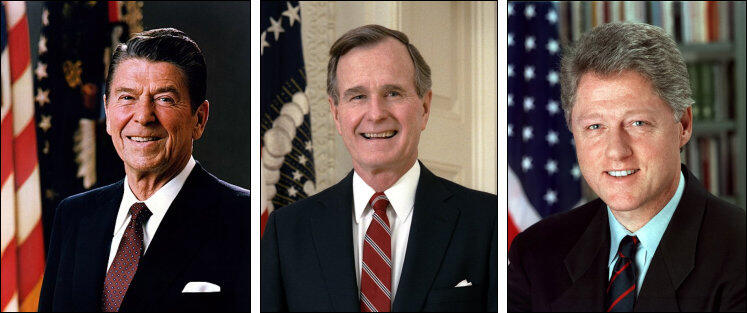
In December 1979, former California Governor Ronald Reagan asked General Stafford to join his 1980 presidential campaign team as his Air Force defense advisor, and was on Reagan's transition team after Reagan’s election in November 1980.In June 1990, Vice-President Dan Quayle and the NASA Administrator asked General Stafford to form and chair a team to independently advise NASA how to carry out President Bush's Space Exploration Initiative. General Stafford assembled the Synthesis Group composed of teams of 40 full-time and 150 part-time members from the Department of Defense, Department of Energy, NASA, as well as obtaining inputs from academia, and many industrial groups to conduct the one year comprehensive study. The result was "America at the Threshold," a road map for the next thirty years of the U.S. Manned Space Flight Program. General Stafford and Vice-President Quayle held a joint press conference at the White House in June 1991 to announce the recommendations to the public.In 1994, during the Clinton Administration, General Stafford chaired the committee to review and make recommendations to enhance the efficiency of the R&D initiatives of the NASA Human Exploration Enterprise that included the NASA Centers at Johnson Space Center, Kennedy Space Center, Marshall Space Flight Center and Stennis Space Flight Center.
Consulting and Business
General Stafford co-founded the technical consulting firm of Stafford, Burke, and Hecker, Inc. in Alexandria, Virginia. He has served on the Board of Directors of numerous corporations listed on the New York Stock Exchange and the American Exchange. He has served as an advisor to a number of governmental agencies, including NASA and the Air Force Systems Command (later named the Air Force Materials Command).General Stafford also served on the National Research Council's Aeronautics and Space Engineering Board, the Committee on NASA's Scientific and Technological Program Reviews, and Vice-President Quayle's Space Policy Advisory Council. He was Chairman of the NASA Advisory Council Task Force for the Shuttle-Mir rendezvous and docking missions, and was Co-Chairman of the Stafford-Covey Space Shuttle Return to Flight task force following the Shuttle Columbia accident in 2003.In 2020, General Stafford served as the Chairman of the NASA Advisory Task Force on ISS (International Space Station) Safety & Operational Readiness.General Stafford was a member of the National Academy of Engineering; Fellow of the American Institute of Aeronautics and Astronautics (AIAA); Fellow of the American Astronautical Society; the Society of Experimental Test Pilots; and a member of the Masonic Lodge.General Stafford was the recipient of many honorary degrees, including a Masters and Doctorate of Humane Letters from Southwestern Oklahoma State University.General Stafford passed away in Satellite Beach, Florida on March 18th, 2024.
